New Front in Santa Barbara County’s Pot Wars
Cannabis Gains a Foothold in the Parched Cuyama Valley
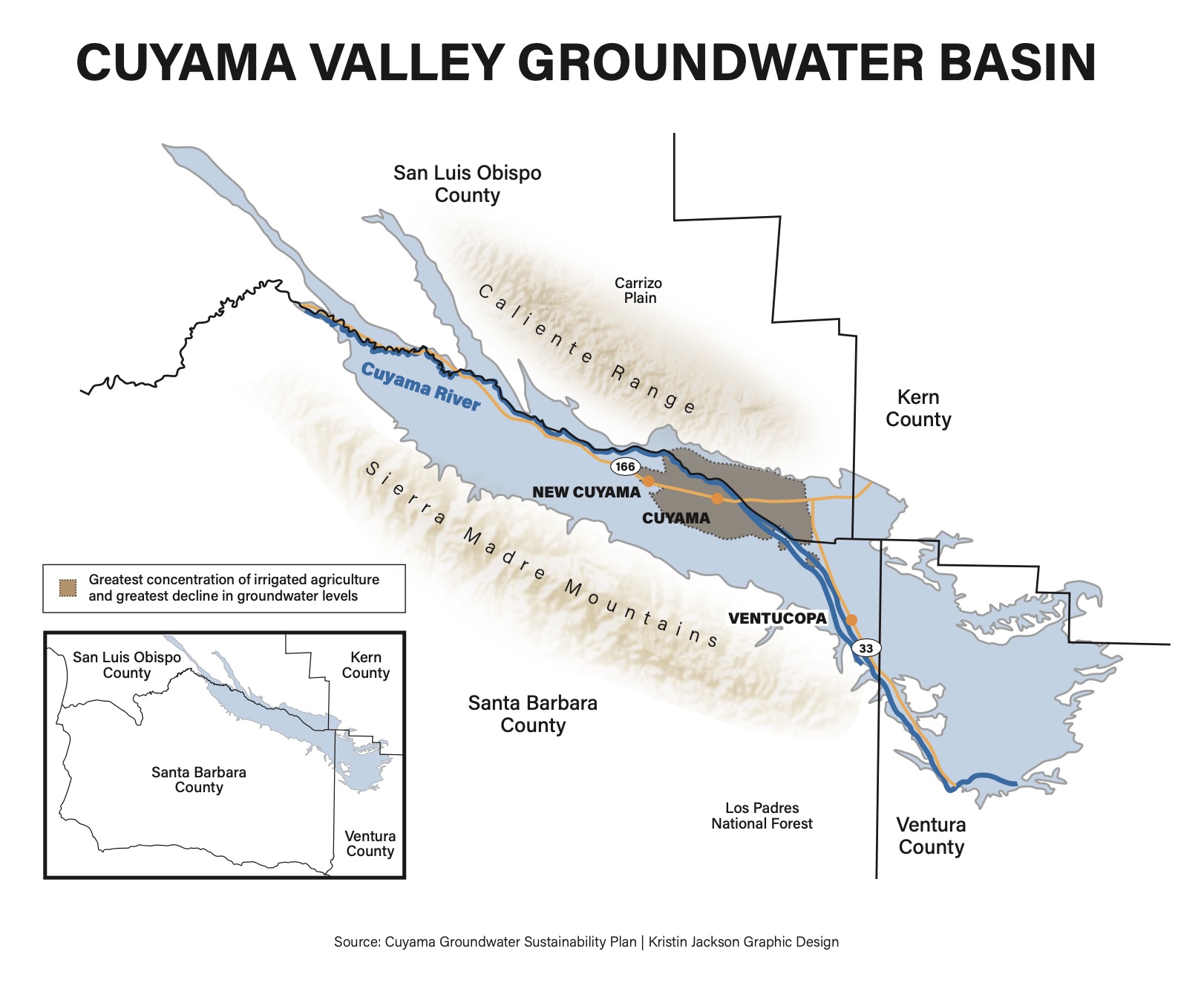
Santa Barbara County’s most depleted water basin, the Cuyama Valley, is fast becoming the latest battleground in the fight over how — and whether — to address the negative impacts of the lucrative cannabis industry on farming and residential communities.
The giant groundwater basin underlying this sparsely populated, heavily farmed, economically depressed valley is one of California’s 21 most critically over-drafted basins and the only one outside the Central Valley. For 75 years, the Cuyama Valley has been a mecca for water-intensive farming on an industrial scale — first, alfalfa, and now, carrots, a $69 million annual crop.
Now there’s a newcomer on the block. More than 740 acres of outdoor cannabis cultivation has been proposed for the Cuyama Valley and is under review for zoning permits, county planners say. The industry is poised to drop new straws into the declining basin, where some of the well water is 1,000 feet deep and 30,000 years old — so old, it’s known as “fossil water.”
It’s the first time that a precious resource is at the heart of the conflict over marijuana in what some are calling “Canna” Barbara County. On the South Coast, Carpinterians are clamoring for stronger regulation of the cannabis greenhouses that are stinking up their neighborhoods. In the Sta. Rita Hills wine region between Buellton and Lompoc, vintners are demanding curbs on smelly outdoor “grows.”
In the Cuyama Valley, agricultural pumping may have to be reduced by as much as two-thirds by 2040, studies show. That’s because, most years, twice as much water is pumped out of the basin as is replenished by rain — a formula for a Dust Bowl. Just how much the carrot corporations and other big growers on the valley flatlands will have to cut back their water use, beginning in 2023, is yet to be resolved.
These days, valley farms up for sale are being advertised as “cannabis-zoned land.” But the water-guzzling carrot fields in the hands of two major corporations are seemingly not for sale or lease. As a result, most of the cannabis “grows” are being proposed for grazing land or unplowed land in the foothills that is not presently being irrigated. And that worries conservationists, who fear that the cannabis industry will further deplete the water supply, undermining smaller-scale farms.
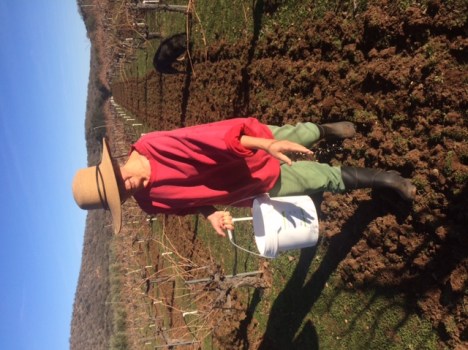
“There seems to be little respect for the Cuyama Valley and for dealing with the really severe water issues and the fact that there are people living there,” said Roberta Jaffe, who grows wine grapes and olives on five acres in Cottonwood Canyon. “We’d like to see projects on irrigated land that would actually reduce the amount of water use on that land.”
Jaffe serves on an advisory committee of 12 valley residents, farmers, and cannabis growers that was convened two months ago by county Supervisor Das Williams, who represents most of the valley, in coordination with the office of Supervisor Steve Lavagnino, who represents Santa Maria and the western end of the valley.
The committee is charged with drawing up a list of voluntary water use guidelines for the industry — most notably, how to set up water offsets, or transfers, for cannabis. These could include paying other farmers to fallow land or replace their sprinklers with driplines. Zoning permits for cannabis in the valley would not otherwise require such conservation measures.
The growers view cannabis as a net benefit for the Cuyama Valley; they say it will reduce the overall water use and generate jobs — a scenario that some conservationists say is possible, depending on the size and location of the water offsets. It’s not known how much irrigation cannabis will require in the harsh valley environment —100-degree summer temperatures and high winds — but the growers estimate that the crop will use half as much water as alfalfa or carrots.
“I know there’s a lot of trepidation in the county, but we have an opportunity here,” said Collin Dvorak, who grows cannabis in Carpinteria and on the dry side of the Cascades in Washington. At a recent hearing on cannabis in the Cuyama Valley, Dvorak told county planners he was “confident this will be known as a ‘best-use’ crop for water to be promoted in this area.”
Nick Barakat, owner of the C & H Market, the Burger Barn and Deli, and a gas station in New Cuyama, says the loss of farming jobs over the years has hurt his business. Cannabis, he says, could bring them back.
“We’re barely surviving here,” Barakat said. “It’s like a ghost town. Now we have some chance to change.”
‘Moe & Moe’
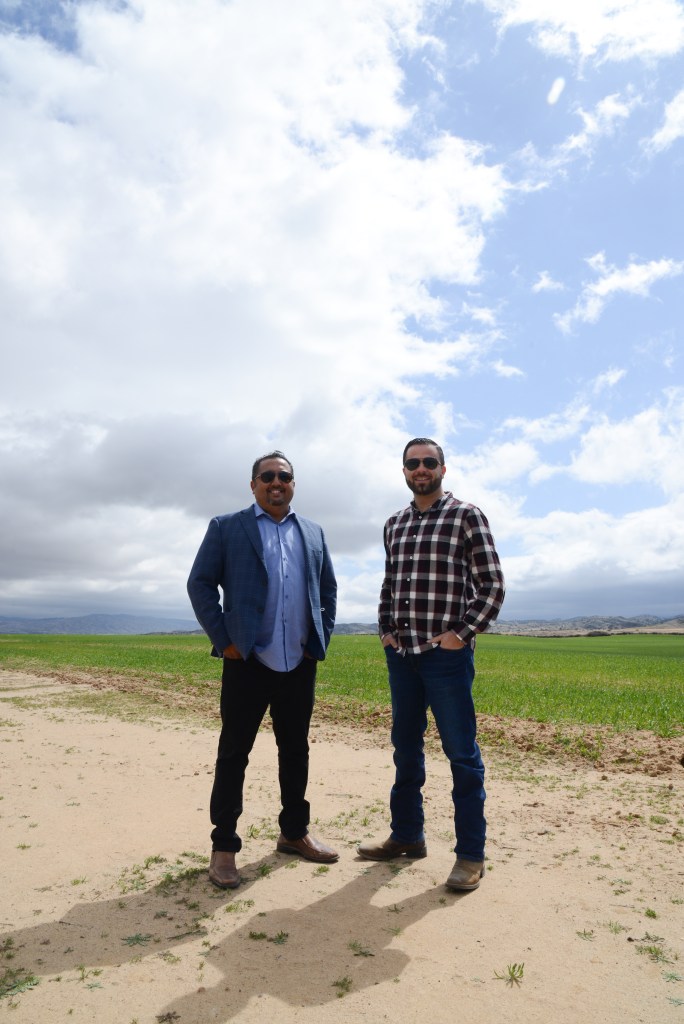
The Cuyama Valley sometimes gets less rain than parts of the Sahara — only 3.6 inches have fallen since last September. Groundwater is the only local source of water; there is no desalinated seawater, state aqueduct water, or reservoir water.
To date, the county has issued three zoning permits in the Cuyama Valley totaling only 3.6 acres of cannabis. But the water question came to a head on March 31, when the county Planning Commission unanimously approved a proposal for 35 acres of cannabis in hoop-houses on grazing land at 2225 Foothill Road. That’s within a stone’s throw of the carrot fields in central flatlands of the valley, where water levels in irrigation wells are dropping as much as eight feet per year.
The applicants, Moe Essa and Moe Jawad, aka “Moe and Moe,” are partners in real estate development in the Central Valley and residents of Fresno and Merced, respectively. City officials from Woodlake, Merced, and Atwater, California, submitted letters of support for their cannabis project last month. Essa and Jawad have obtained tentative approval from Woodlake officials to develop an industrial park there, including a cannabis processing building for their Cuyama Valley harvests; it would be just a two hours’ drive. They call their business “Cuyama Farms.”
In all, Essa and Jawad have submitted applications for 133 acres of cannabis in the Cuyama Valley, including 95 acres that they own at 2011 Foothill and three acres they own at 262 Castro Canyon Road; both of these properties are on unplowed land. At 2225 Foothill, they are leasing 35 acres of a 78-property from Frank Suarez, a rancher who raises sheep and grows jujube trees for their date-like fruit.
Essa and Jawad share a seat on the county’s advisory committee on cannabis in the valley. They estimate that their 35-acre project will need 104 acre-feet of water per year, including cannabis and landscaping. For context, that’s enough water to supply three-quarters of the town of New Cuyama, population 700.

At the same time, because of the groundwater overdraft, the partners are proposing to voluntarily offset their new water use on a one-to-one ratio. They have entered into a contract to pay a farmer in Ventucopa, more than five miles away, to fallow 28 acres of alfalfa and refrain from planting his thirsty crop, cutting his water use by at least 104 acre-feet per year.
“As a good businessman, I decided to do it,” said the farmer, Jim Wegis of Triangle E Farms on Highway 33. He said he plans to continue farming olives and pistachios on the rest of his land.
Wegis is the only retail alfalfa dealer in the valley. If he stops selling, small-scale farmers in the valley will be forced to travel farther for hay and pay more.
“Marijuana’s legal; you adapt or you die,” Wegis said. “There will be more of these water transfers.”
The water offset requirement for Cuyama Farms would be incorporated into the zoning permit and would run with the property for as long as cannabis is grown there. As part of the permit, Essa and Jawad also have agreed, voluntarily, to put meters on their wells and submit data on their water use to the county and the Cuyama Basin Groundwater Sustainability Agency (GSA), the group that will oversee future pumping reductions.
“If you grow up in the Central Valley, you have empathy for the water situation,” Essa said. “It’s a dynamic process, and, hopefully, we can sort out the finer details. This is a strong commitment from us.”
Homegrown Opposition
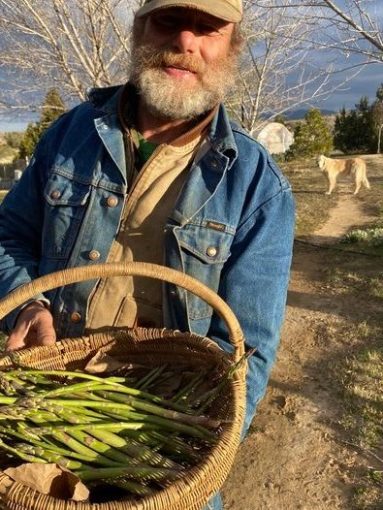
Still, some Cuyama Valley farmers are dreading the coming influx of cannabis; they view the water offset for Essa and Jawad’s operation as bad precedent, and they wonder whether the advisory committee is a waste of time.
The 35-acre Cuyama Farms project was approved by the county planning director in October; then it was appealed to the Planning Commission by Jean Gaillard, the owner of Cuyama Homegrown, a one-acre vegetable farm at 1381 Foothill, 1.5 miles west of Essa and Jawad’s proposed “grow.” On Monday, Gaillard, who is on the advisory committee as a small-scale farmer, filed another appeal, asking the county Board of Supervisors to deny the project. A hearing date is pending.
Gaillard noted that Essa and Jawad plan to drill a new well 1,200 feet deep, while his own well is only 500 feet deep. Their proposed offset with a Ventucopa farmer, he said, is undemocratic and shortcuts local efforts to reduce pumping.
“I don’t agree with this kind of opinionated people who come here,” Gaillard said. “There’s a lot of money involved in cannabis. If you want to come, you have to play fair with everybody. My water well level is already dropping two feet per year, and there’s no cannabis. In terms of us little growers, we already know we’re going to struggle in the future because we might be subject to water pumping restrictions.”
Gaillard listed other concerns in his appeal, too, including the potential impact on farm tourism of what he regards as unsightly cannabis hoop-houses in the scenic foothills. The spread of a crop for recreational drugs on good farmland, Gaillard said, will undermine local efforts to develop a farm-to-table network for valley residents, most of whom make the hour-and-a-half drive to Santa Maria or Bakersfield for groceries.
At the very least, Gaillard said, the commission should have delayed a decision on the permit for a couple of months, until the advisory committee could agree on some guidelines. Marc Chytilo, Gaillard’s attorney, read to the commission from the county’s own general plan, which states: “The county shall not make land-use decisions which would lead to the substantial overcommitment of any groundwater basins.”
But the commissioners said that water regulation in the valley was best left to the GSA. They noted that Essa and Jawad had the right to grow alfalfa or carrots without permits, and they said it wasn’t fair to delay their project until the cannabis guidelines are complete.
“Things are changing in Cuyama,” said Planning Commission Chair Larry Ferini, a Santa Maria strawberry farmer. “None of us really like change. A water exchange of one-to-one is just amazing. I hold the applicants in high regard for just doing that, without being asked.”
Knocking on Doors
It’s not likely that all 740 acres of cannabis proposed for the valley will obtain county zoning permits. The Board of Supervisors has placed a cap of 1,575 acres for cultivation away from the coast; county records show that, to date, 774 acres have been approved and, of those, 355 have been issued permits. In the Sta. Rita Hills, nearly 800 acres of cannabis are under county review.
Cuyama Valley conservationists say that paying for offsets would work best if the cannabis crop and the crop to be fallowed were located in the same part of the basin — not miles away from a new cannabis well, as Essa and Jawad are proposing.
The two growers view the basin as one unit; conservationists contend that bedrock partially impedes the flow of water from Ventucopa down into the central Cuyama Valley. Essa and Jawad say their agents knocked on a lot of doors, trying to find a closer partner for water offsets. But with just two companies controlling the vast carrot holdings — Grimmway Farms and Bolthouse Farms of Bakersfield — they didn’t find any takers.
“We tried to reach different people at the local level, high levels, the corporate office — and nothing came out of it,” Essa said. “That doesn’t mean we’re giving up. We’re hoping the GSA can advance the water market.”
Essa said he did not “at all” view his critics as his opponents.
“The opposition usually wants us to leave town,” he said, but in the Cuyama Valley, “we’re kind of working with each other. We’re teaching them about the cannabis industry; they’re teaching us about the Cuyama Valley. Our project can always be modified.”
‘Department of Do No Worse’
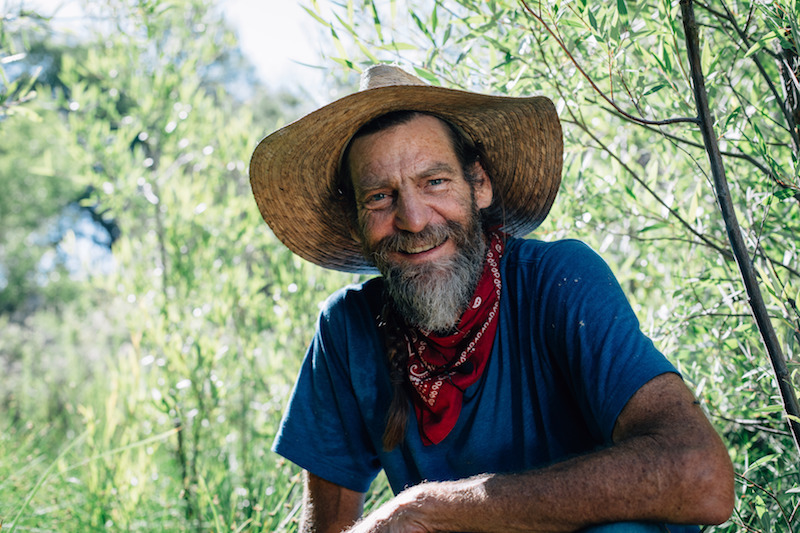
It now falls to the pro-cannabis majority on the Board of Supervisors to help shape the incipient water market in the valley. Conservationists will argue that the offsets for cannabis should be larger, given the enormity of the overdraft.
“How can a one-to-one offset for a new operation make any progress?” asked Brenton Kelly, chair of the Cuyama Valley Community Association; watershed advocacy director for Quail Springs Permaculture, a nonprofit educational farm near Ventucopa; and the chair of the stakeholders’ advisory committee for the GSA.
“It should be one-to-one-and-a-half, not just bringing in a new use and playing with ‘paper’ water,” Kelly said. “When can we get beyond the ‘Department of Do No Worse’? We know we may have to be cutting back by 67 percent.”
Supervisor Williams, who sits on the GSA board, said he agrees that water offsets for cannabis should be greater than one-to-one — but only if they are proposed for a different part of the basin.
“If we do this right,” Williams said, “we will improve the chances of reaching groundwater sustainability; then cannabis will help reduce water usage in the valley while keeping jobs. If we do this wrong, it will frustrate the goals.”
Melinda Burns volunteers as a freelance journalist in Santa Barbara as a community service; she offers her news reports to multiple local publications, at the same time, for free.
Support the Santa Barbara Independent through a long-term or a single contribution.




You must be logged in to post a comment.